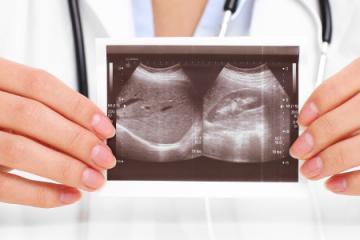




HDFN Clinical aspects
At birth, the clinical picture of HDFN pathology is variable in relation to the severity of the disease.
HDFN INDICATORS
A first indicator and yellowish coloring of amniotic fluid, umbilical cord and vernix caseosa (a creamy white substance that covers the fetus before birth). This staining is due to the accumulation in the blood of bilirubin (unconjugated), a yellowish substance caused by the destruction of red blood cells. In mild cases, during pregnancy, the generated bilirubin is removed from the placenta and metabolised by the mother’s liver, while in severe cases the excessive elevation of bilirubin levels, called jaundice or icterus, is highlighted with typical yellowish coloration.
Jaundice generally becomes even more evident in the early days of the newborn. After birth, the excessive concentration of bilirubin in the blood, which can no longer be transferred to the bloodstream of the mother, exceeds the physiological elimination capacity of the newborn, thus producing yellowish coloration.

A second important indicator of the disease is the levels of hemoglobin in the umbilical cord blood. lower levels indicate a serious hemolytic status.
The spleen and liver of the infant appear enlarged for the continuous production of red blood cells necessary to compensate the anemia in the fetus. A serious pallor of the newborn indicates the state of severe anemia. Heart failure, heart enlargement, respiratory distress, widespread edema, circulatory collapse and reduced oxygen concentration in the blood (hypoxemia) might appear.
Excessive fluid leakage in two or more compartments (skin, pleura, pericardy, peritoneum), called hydrops fetalis, often causes death in the uterus or just after birth. The severity of the hydrops fetalis is related to the degree of anemia and the reduction in albumin content in serum due to hepatic dysfunction. Pulmonary edema and pleural effusion, present in the ill infant, can prevent the onset of normal respiration leading to severe asphyxia at birth.
High bilirubin concentrations in the fetus affected by HDFN may be the cause of an important neurological syndrome called bilirubinic or kernitteroic encephalopathy, which results in acute and chronic neurological damage.
In the acute phase, muscle tone variations (hypotonic alternating hypertensis) are highlighted with the characteristic extension position of the head (Opisthotonus). The unborn looks drowsy, with no difficulty in sucking. The impairment of the general picture leads to seizures and coma; death can occur due to respiratory failure
In surviving children, chronic severe form (Kernittero) can be highlighted, characterized by cerebral palsy, motor disorders (choreoatetosis), sensory (neurosensory auditory loss), and cognitive deficits. The clinical signs progression and the severity of the status depend on the level of bilirubin in the blood, the duration of exposure to bilirubin, the predisposition of the subject and the concomitance of other pathologies that may aggravate the condition (premature, sepsis, asphyxia perinatal, etc.).



